Corby: Roman tiles found at Priors Hall Park question worker theory
- Published
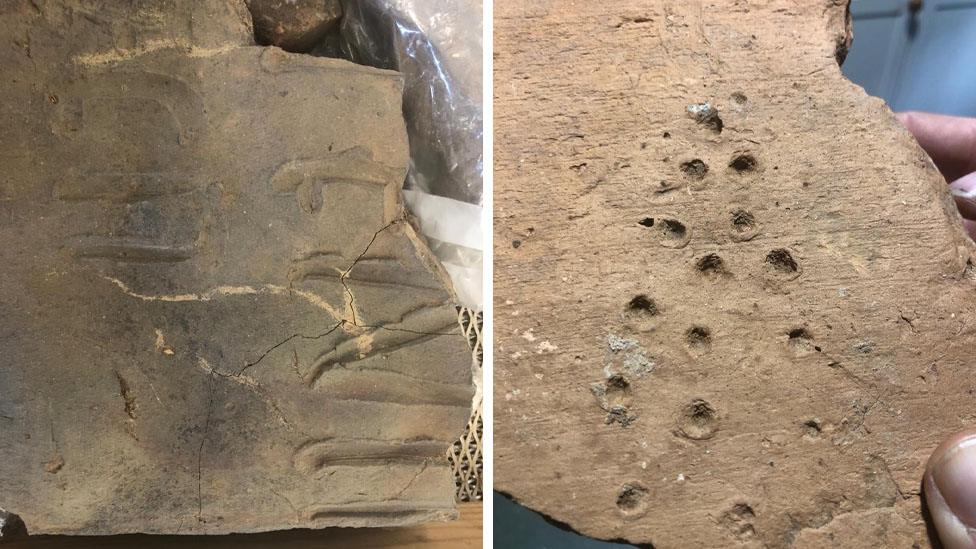
A written name and the imprint of a woman's sandal have been found on tiles recovered from a 3rd Century tile factory at Priors Hall Park, near Corby
Markings found in Roman tiles have shown workers were "more of a mixture" of people than first thought.
The imprint of a woman's sandal and a written name were found on items recovered from a 3rd Century tile factory at Priors Hall Park, Corby.
Experts said they showed workers were not just young male slaves but "literate men and women in nice shoes".
Nick Gilmour, from Oxford Archaeology, said the marks showed it was "not clear cut" who the Roman workers were.
Archaeologists have been working on-and-off at the Northamptonshire site for about 12 years, ahead of a development of more than 5,000 homes.
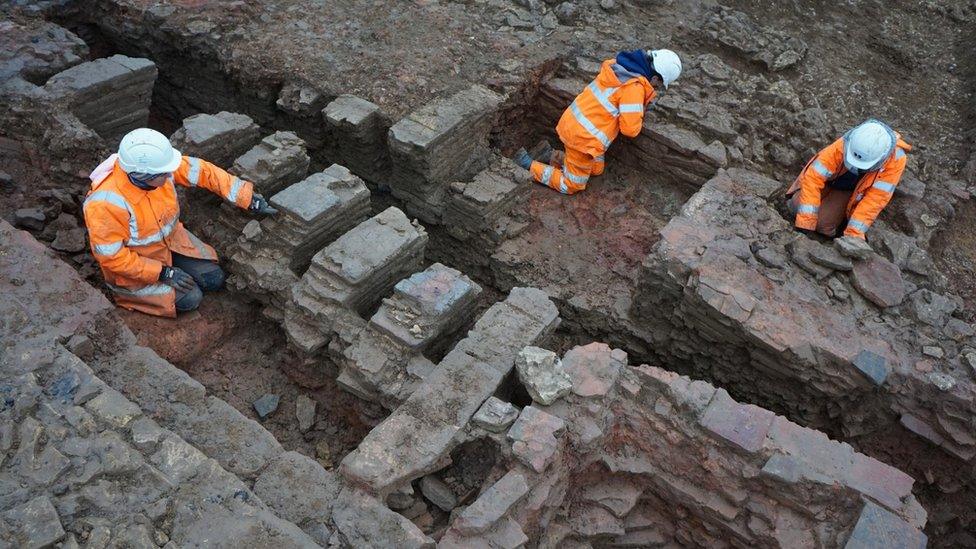
Several tile kilns were among the items excavated at the Priors Hall Park development in Corby
The Little Weldon Roman villa had first been uncovered in the 18th Century, but in 2011 during a geophysical survey a second Roman villa was revealed.
Oxford Archaeology took on the excavations in 2019 when Urban & Civic took over the development. They uncovered a temple/mausoleum that was turned into a pottery, brick and tile manufacturing centre sometime in the later 3rd to early 4th Century, to make building materials for Roman villas.
The latest findings come from the analysis of recovered material, including six tonnes of discarded tiles which are now being recorded.
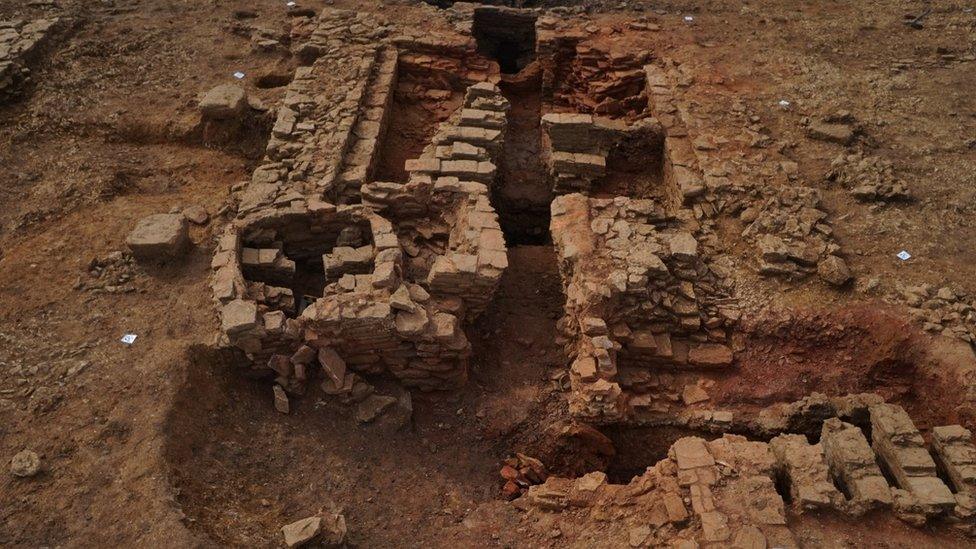
The industrial site was used to make materials for building Roman villas
Mr Gilmour said Romans in the area were producing tonnes of tiles weekly to distribute around a network.
While many are just basic tiles, "maybe one in 10,000 is really interesting", including a "big thick tile" in which somebody had used their finger to trace letters in it, he said.
Individual tilers would often mark about one in every few they produced with a signature, so they could get paid for what survived the kiln.
But these tile signatures were usually patterns and symbols which showed that workers were not high status.
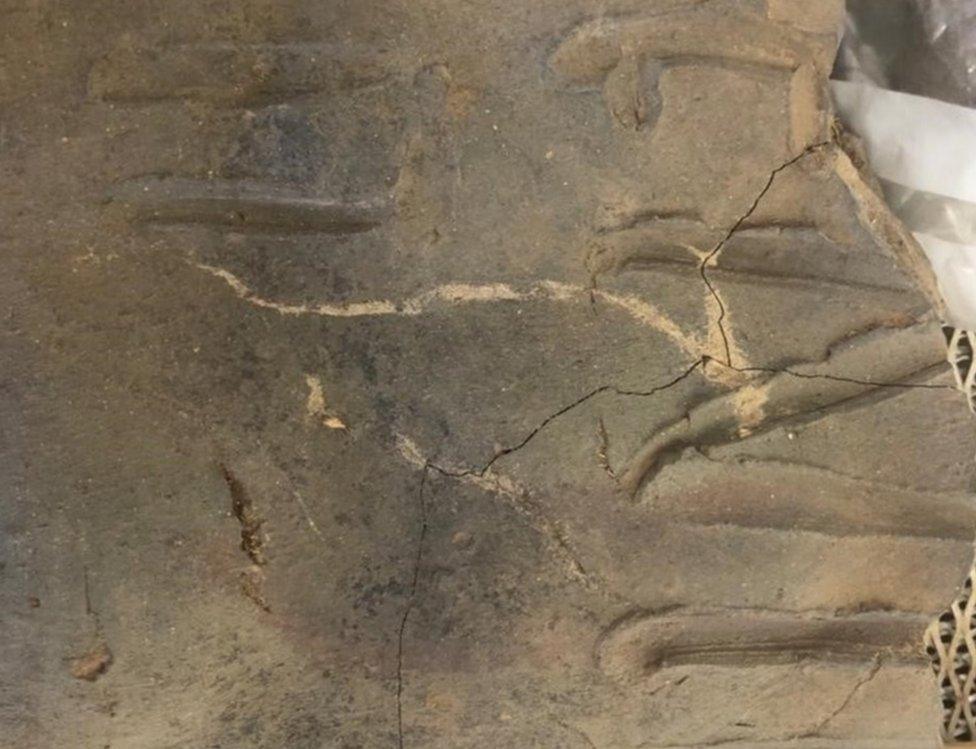
The latest findings come from the analysis of thousands of recovered tiles
Mr Gilmour said the latest find was "really unusual" because it reads "Potentius fecit", which translates as "Potentius made me", or as some linguists would say, "I was made by Potentius".
"They have actually written their name with their finger," he said.
"It demonstrates that the tiler was literate - perhaps surprising for someone who was in a role usually carried out by an indentured servant... so they were higher status than we thought."
He said his team had tried to find other examples of this kind of signature, but had not yet seen one.
"It's not definitely the only example, but we have asked a lot of experts in the field so we are close to convinced there isn't another one," he said.
"The irony is the reason that we have got it is because it failed, it wasn't even vaguely flat and wasn't used on a villa or it wouldn't have been in the tile rubbish tip.
"So he might have been literate, but he was maybe not so good a tiler."
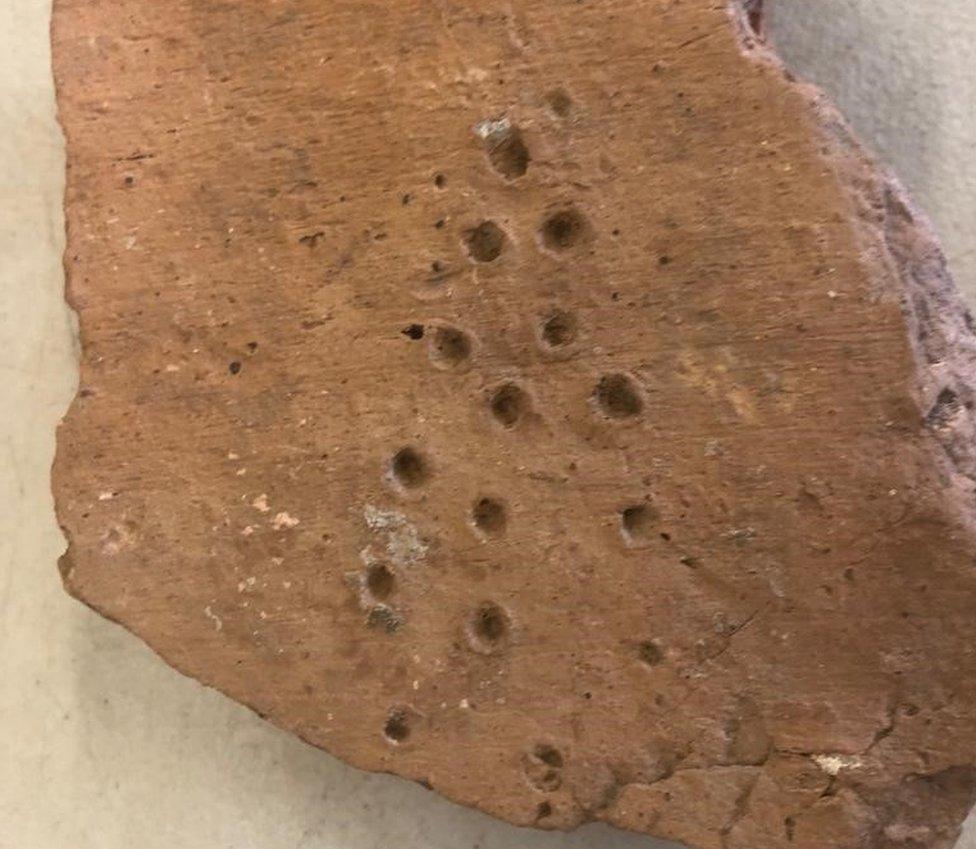
The indentations on another tile are believed to be the imprint of nails on the bottom of a woman's sandal
Tilers also used to check every few tiles with their feet by tapping them lightly, to see if they were dry and ready to be fired.
A second terra cotta coloured tile with small indentations is believed to be the imprint of nails on the bottom of a woman's sandal, as it showed a very narrow foot shape.
"It looks like women were working in the tilery as well, so it's not as clear cut as we thought," Mr Gilmour said.
"The workers were not just young male slaves - these markings show there were literate men and women in nice shoes as well, so it was more of a mixture.
"There was definitely still a hierarchy... the man in the villa would have been in charge, but who the workers were is not clear cut."
He added that the footprints of animals and imprints of leaves found in the tiles would also be studied, to find out whether the work was seasonal and what the environment was like.
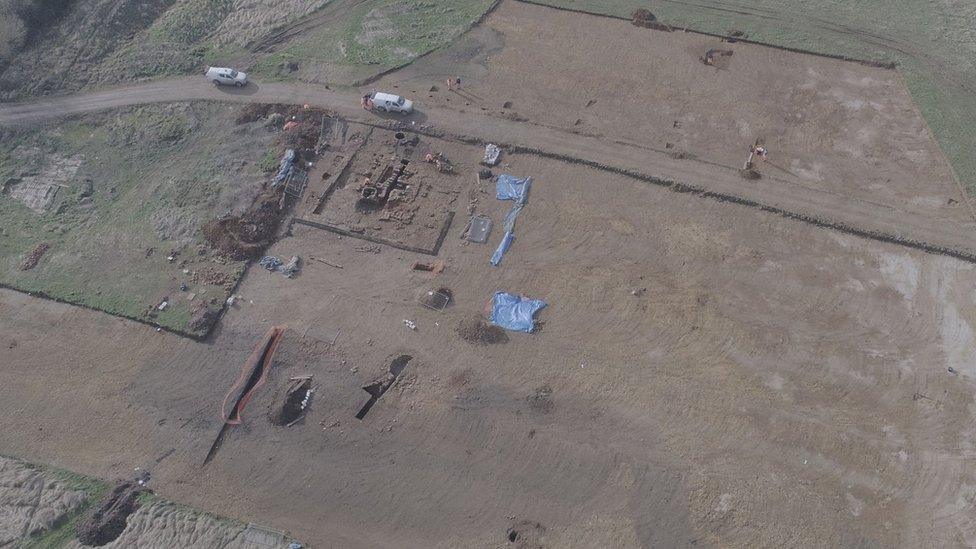
Items found during excavation give an insight into Roman workers' lives, archaeologists said
Mr Gilmour added that the finds in Corby showed the "possible scale" of the tile industry.
During a second phase of work in 2021, they found an intact Roman road that shows how Corby joined up with surrounding settlements.
"It's not uncommon to find a kiln next to a villa, but it would be a small one just for making tiles for the one villa," he said.
"But at Corby they were producing tiles to sell to a wide area, which is a much more modern idea.
"The next step is scientifically examining them under a microscope to look at what's in the clay, so that longer term we can see where they were moving them to.
"Was it two or three miles or across [the now] county or further?"

Priors Hall Park is a development of more than 5,000 new homes in Corby

Find BBC News: East of England on Facebook, external, Instagram, external and Twitter, external. If you have a story suggestion email eastofenglandnews@bbc.co.uk, external
Related topics
- Published29 January 2023

- Published10 January 2023
- Published6 December 2022
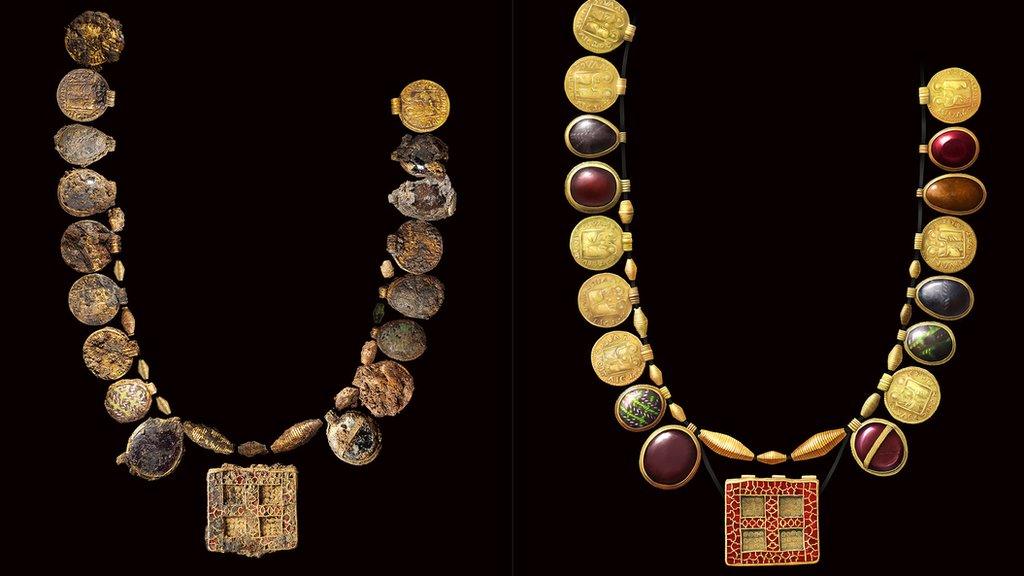
- Published11 January 2022
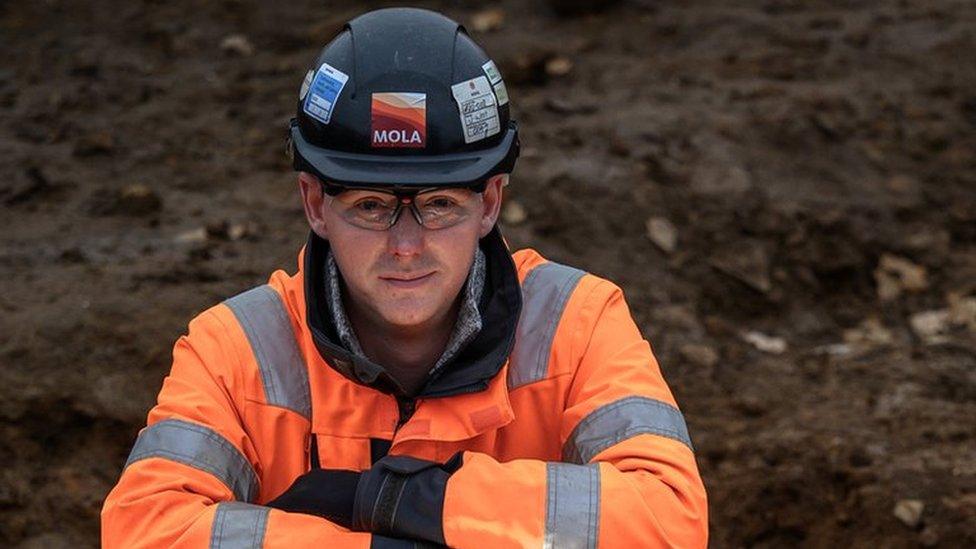
- Published10 August 2020
